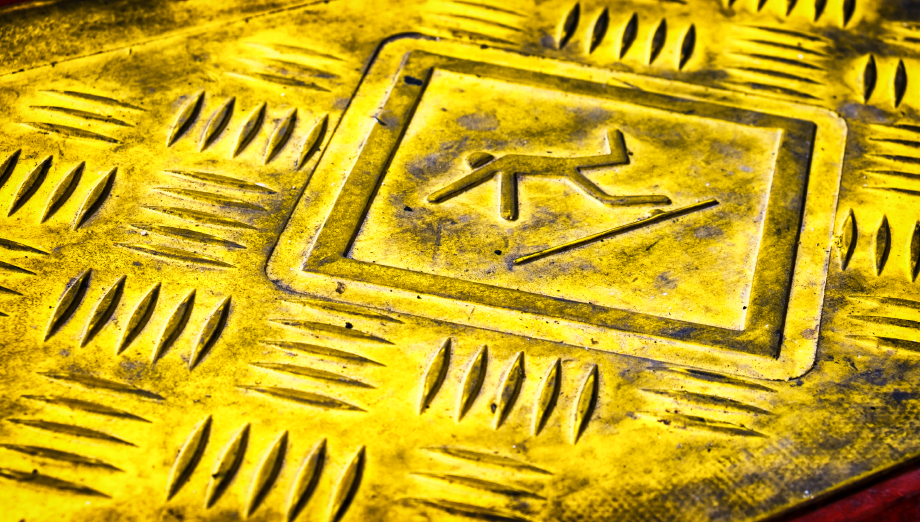Yesterday’s Advisor presented safety training tips for preventing amputations in the workplace. Today, we cover another much more common safety hazard that can be mitigated through proper training: slips, trips, and falls.
 |
Slips, trips, and falls make up the majority of general industry accidents. They cause 15 percent of all accidental occupational deaths, second only to motor vehicles. Reminding your employees about precautions could help prevent a deadly or disabling incident. Slips typically happen when there is a loss of grip between the shoe and the floor. Trips happen when a person’s foot hits a low obstacle in his or her path, causing a loss of balance. Factors to examine when assessing slip and trip hazards include:
- Floor contaminants such as water, oil, grease, dust, and metal shavings;
- Floor surfaces, which require sufficient grip to prevent slipping. The greater the thickness or viscosity of the contaminants, the greater the slip resistance of the flooring required to protect against slips;
- Proper cleaning to ensure that contaminants are effectively removed and there is no buildup of cleaning product residue on the surface;
- Uneven flooring, trailing cables, loose mats, and changes in floor surface level;
- Lighting and other environmental factors, even including unexpected loud noises;
- Activities and behaviors such as hurrying, carrying large objects, talking on a cell phone, and not holding the handrail; and
- Footwear, which should be suitable for the type of work and environment, comfortable with adequate nonslip sole and tread pattern, and checked regularly.
Your one-stop safety management resource, available 24/7. Go here to take a no-cost site tour or here to try it in your own office!
You Need a Plan to Help Employees Stay on Their Feet
According to the Pulp and Paper Safety Association, the best way to prevent slips, trips, and falls is to develop a risk management plan that identifies, assesses, controls, and monitors safety hazards and risks.
Start by finding exactly where incidents are taking place. Review injury reports and workers’ compensation data, talk to employees and supervisors, and inspect the site carefully. Assess the slip and trip hazards and the number of people exposed. Then, decide what needs to be done to fix or eliminate the problem. Choose from six types of safety controls:
- Eliminate the hazard. Remove slip and trip hazards at the design stage, for example, by eliminating changes in floor levels or installing more power outlets through the floor and ceiling to avoid trailing electrical cords.
- Substitute with a safer option. Resurface floors as needed if the flooring is the problem.
Great news! BLR’s renowned Safety.BLR.com® website now has even more time-saving features. Take our no-cost site tour! Or better yet, try it at no cost or obligation for a full 2 weeks.
- Isolate people from hazards. Limit employee access to high-risk areas.
- Minimize by redesign. Apply floor treatments to increase slip resistance, improve lighting, stop leaks, provide adequate drainage to prevent pooling, and clearly mark the edges of steps and/or any changes in floor height.
- Use administrative controls. Implement good housekeeping practices such as clearing access ways, promptly cleaning up spills, using signage or barricades for wet or slippery areas, and providing safety training.
- Provide personal protective equipment (PPE). In addition to the above controls, consider requiring employees who work in areas with slip hazards to wear shoes with slip-resistant outsoles or treads.
After selecting the appropriate controls, monitor and review their effectiveness, making sure you have not introduced new hazards or risks. The best strategy is to incorporate features into the design of the work space that will prevent slips, trips, and falls.
